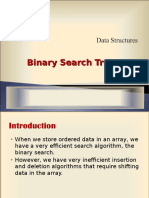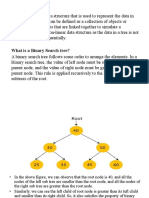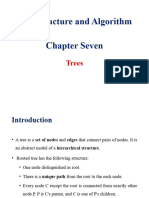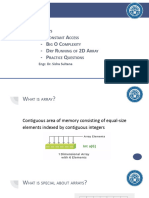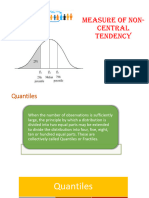0% found this document useful (0 votes)
69 views28 pagesBinary Search Trees Explained
The document discusses binary search trees (BST), which provide efficient insertion, deletion, and search algorithms. A BST is a binary tree where all left descendants of a node are less than or equal to the node and all right descendants are greater than or equal. This property allows searching, insertion, and deletion in O(log n) time. The document covers BST operations like search, insert, delete, finding the minimum/maximum elements, and finding predecessors and successors of nodes.
Uploaded by
Muhammad Owais khanCopyright
© © All Rights Reserved
We take content rights seriously. If you suspect this is your content, claim it here.
Available Formats
Download as PDF, TXT or read online on Scribd
0% found this document useful (0 votes)
69 views28 pagesBinary Search Trees Explained
The document discusses binary search trees (BST), which provide efficient insertion, deletion, and search algorithms. A BST is a binary tree where all left descendants of a node are less than or equal to the node and all right descendants are greater than or equal. This property allows searching, insertion, and deletion in O(log n) time. The document covers BST operations like search, insert, delete, finding the minimum/maximum elements, and finding predecessors and successors of nodes.
Uploaded by
Muhammad Owais khanCopyright
© © All Rights Reserved
We take content rights seriously. If you suspect this is your content, claim it here.
Available Formats
Download as PDF, TXT or read online on Scribd
/ 28
